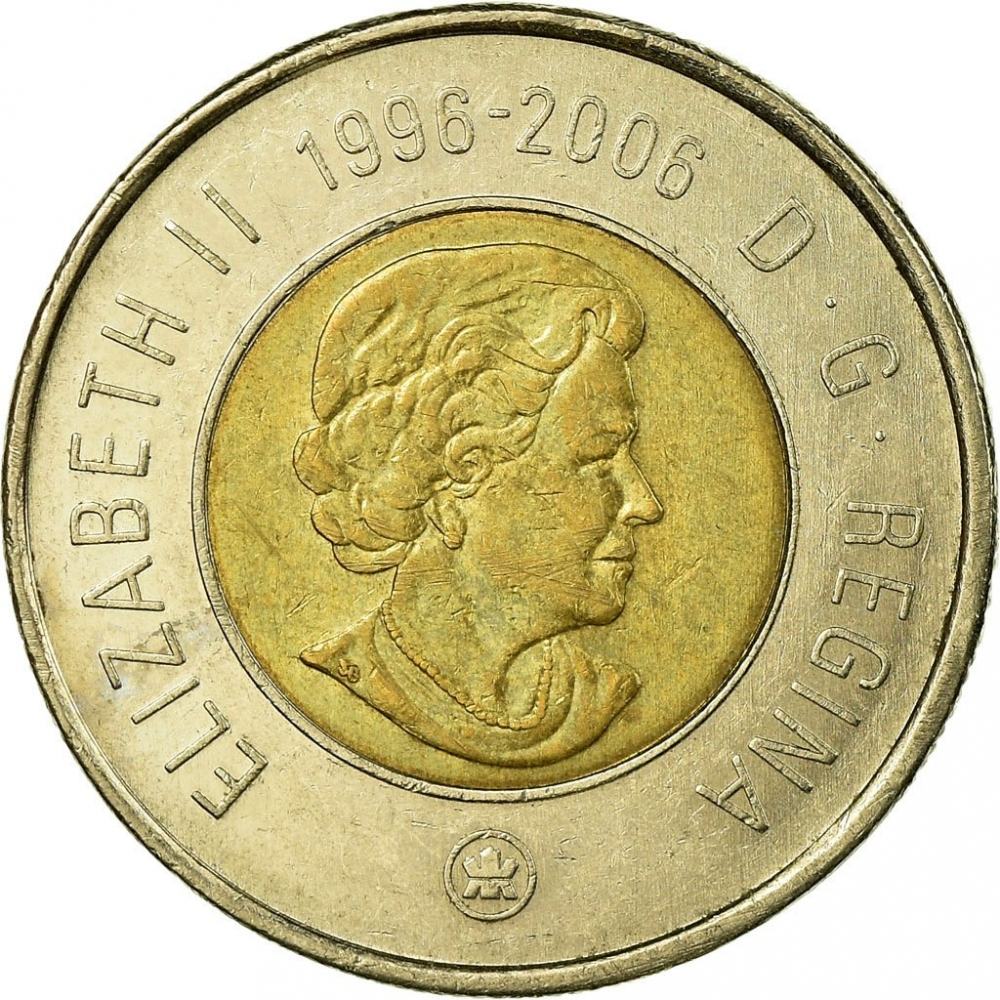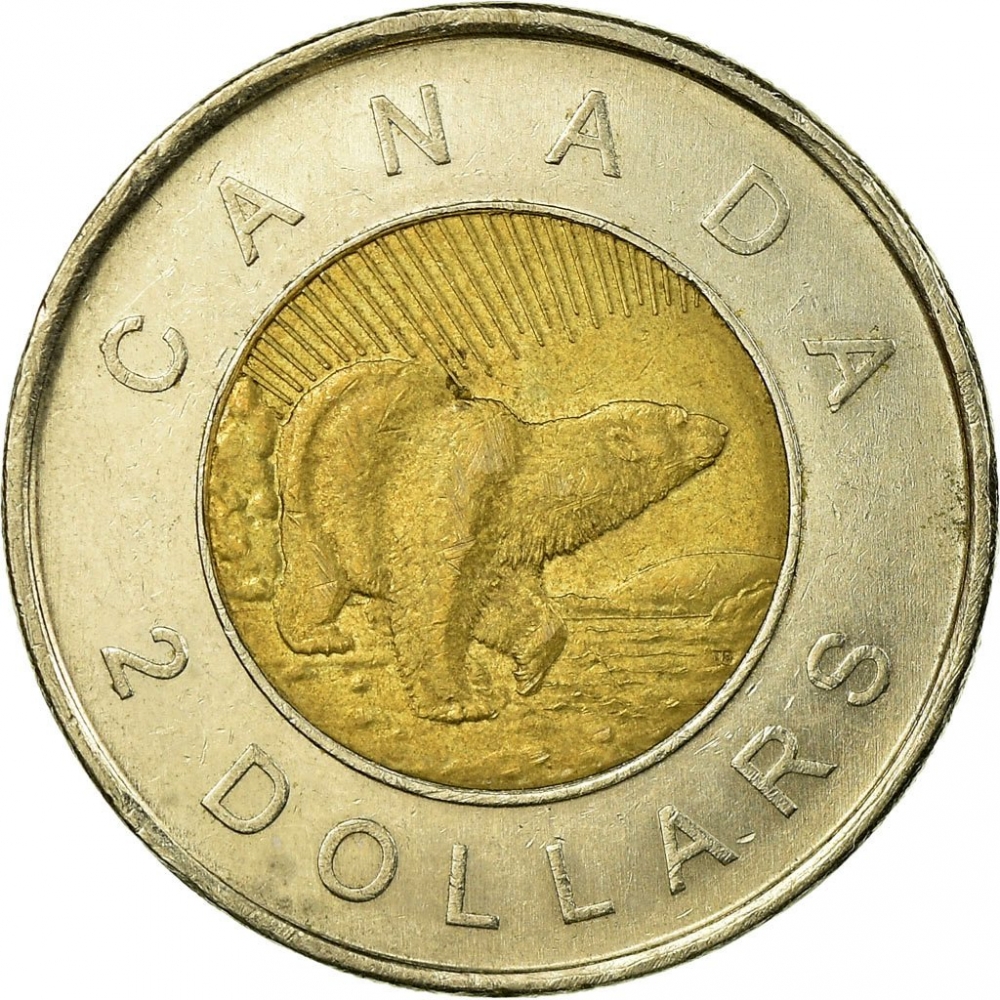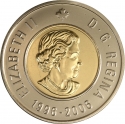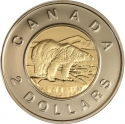You are about to finish your registration. Please check your mailbox (including spam folder). There should be a letter with a confirmation link. Check setting to make sure that your e-mail address is correct.
Send letter againDescription
The Canadian two-dollar coin, commonly called the toonie, is the most valuable of the frequently used Canadian coins. "Toonie" is a portmanteau word combining the number "two" with the name of the loonie, Canada's one-dollar coin.
Finance Minister Paul Martin announced the replacement of the $2 banknote with a coin in the 1995 Canadian federal budget speech. Under the direction of Hieu C. Truong, the RCM engineering division designed the two-dollar coin to be made from two different metals. The metals for the bimetallic coin would be lighter and thinner than those produced anywhere in the world. To join the two parts, the engineering division selected a bimechanical locking mechanism. By the end of 1996, the Winnipeg facility had struck 375 million of these coins. The coin was officially launched at Ben's Deli in Montreal on February 19, 1996.
There were two versions:
• The traditional Polar Bear design.
• An updated pose of the bear looking up at the northern lights. At some point in the process, the bear in this design was nicknamed "Churchill".
Obverse

|
Fourth portrait of HM Queen Elizabeth II, when she was 77 years old, facing right and surrounded by the inscription. The dates above the effigy. The mint mark of the Royal Canadian Mint below. ELIZABETH II 1996-2006 D•G•REGINA |
|---|---|
Reverse

|
A polar bear (an updated pose) looking up at the dramatic lines of northern lights, surrounded by the facial value and the country name. CANADA |
| Edge |
2 Dollars
4th portrait
KM# 836 Schön# 666
Characteristics
| Type | Commemorative Issue (Circulating) |
| Material | Bi-Metallic |
| Ring | Nickel |
| Center | Aluminium Bronze |
| Weight | 7.3 g |
| Diameter | 28 mm |
| Thickness | 1.8 mm |
| Shape |
|
| Alignment | Medal |
| Mint |
Royal Canadian Mint (Maple Leaf)
|



